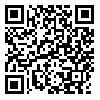BibTeX | RIS | EndNote | Medlars | ProCite | Reference Manager | RefWorks
Send citation to:
URL: http://rjms.iums.ac.ir/article-1-4245-en.html
Background: Today, e-learning to patients is done more easily and more attractive along with text, audio, image and video as a new training method. But despite of many advantages of e-learning effectiveness in self care, it is observed in practice that in clinical settings and even educational environment performance of professional individuals is not appropriate in patient education. And due to lack of awareness among patients of the disease and its process, leads to patient readmission. This study aimed to literature review the necessity of E-learning application and its effectiveness in self-patients' care.
Methods: This study is a narrative review and searching in ERIC, Pubmed, Irandoc, Iranmedex, SID (Scientific Information Database), Magiran databases and Google Scholar search engine, with the keywords of Education, Effectiveness, Electronic, Patient, self Care was performed by two evaluators between 2000 and 2015. Among 87 articles, 24 valid and related articles were enrolled.
Results: Patient education should be done with the aim of making them more independent in regarc to self-care. Patient related factors including choice of location and time of training, motivation and readiness for learning, cultural situation, socio-economic status, level of acceptance, level of understanding and education, easy interaction with their caregiver and factors related to the educational system, including the performance of-care systems, allocation of facilities, appropriate and skilled human resources, time and facilities allocation, necessity to identify audiences and their specific needs is emphasized. However, factors such as inadequate support and advanced age of patients, low literacy in developing countries, inadequate training and irregular follow up reduce the effectiveness of this method.
Conclusion: Training health personnel is essential for E-Learning. Also providing opportunities for interactive communication with patients and patient education for using e-learning system with content presentation is necessary.





